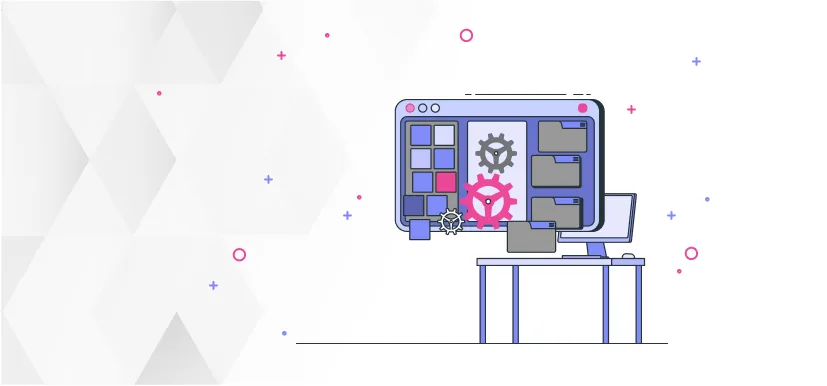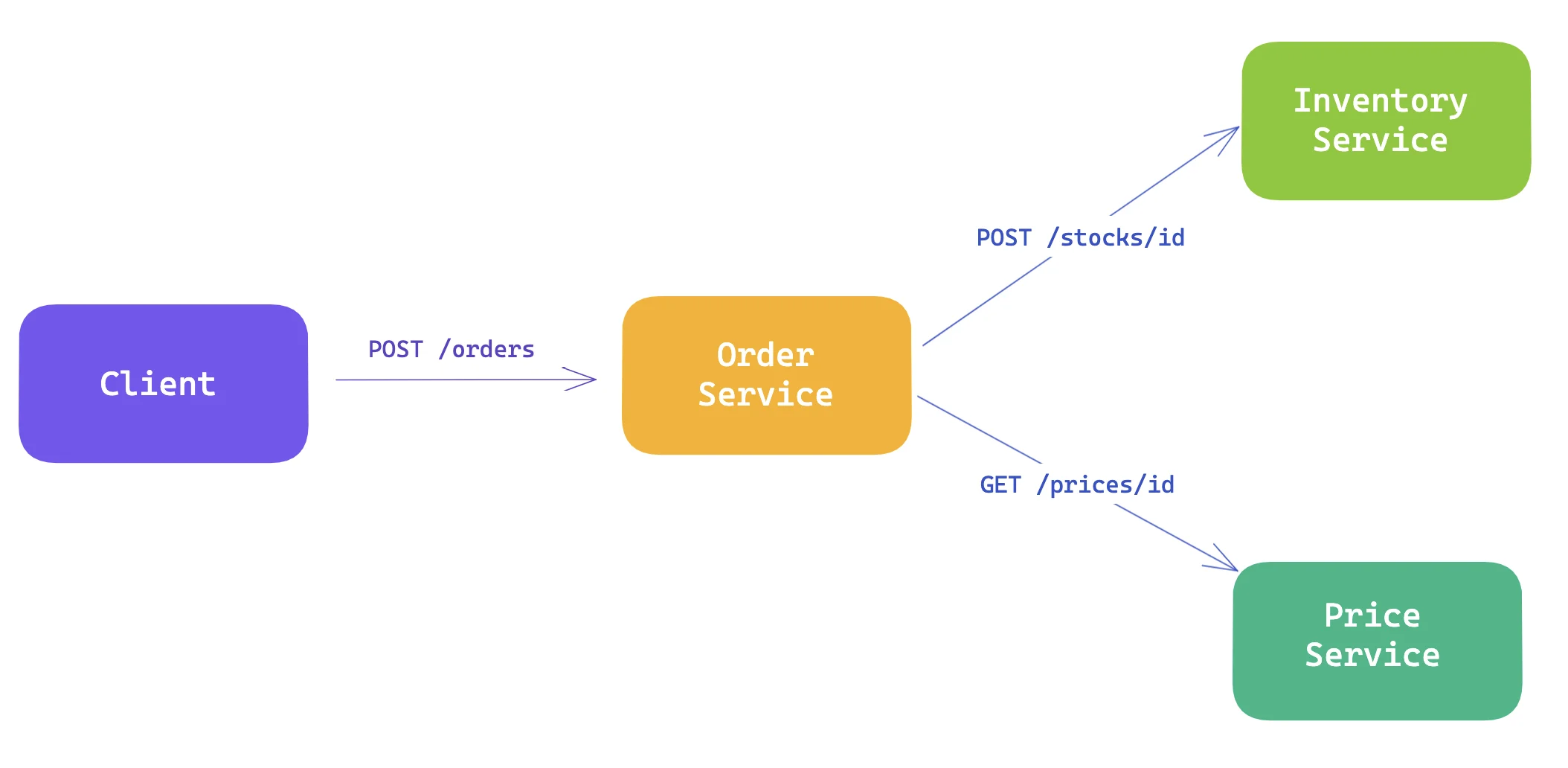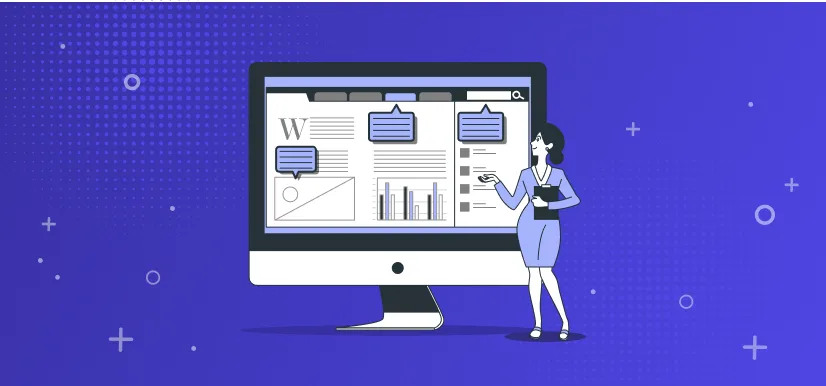- MACH
SDK vs. API: Everything You Need to Know About SDKs and APIs


Do you ever wonder how developers create applications and enable them to communicate with other services?
Have you ever asked yourself how companies are able to integrate different services and systems?
The answer lies in Software Development Kits (SDKs) and Application Programming Interfaces (APIs).
SDKs and APIs are essential tools for developers. SDKs are designed by manufacturers of operating systems, hardware platforms, program languages, software, or applications. SDKs provide a toolkit that helps developers to integrate their development with existing technology to make their products more marketable. APIs, on the other hand, provide a set of protocols, routines, and tools for building software applications by allowing different components to communicate with each other.
In this blog post, we will discuss SDKs and APIs in depth. We will explore the differences between them and their benefits. We will also cover what makes them essential to developers and the business world. We will conclude by looking at how to choose the right SDK and API for your needs.
By the end of this blog post, you will have a better understanding of the role SDKs and APIs play in the development and business world.
SDK - Software Development Kit
What Is a Software Development Kit (SDK)
As a developer, especially if you are working in a startup, you need to focus on your product to be more marketable as soon as possible. Here is your loyal servant to help you with this aim: Software Development Kit.
In that manner, SDK is a program designed by manufacturers of operating systems, hardware platforms, program languages, software, or applications. SDK is designed for use within a specific system, on a certain operating system, or with a specific programming language.
SDK provides a toolkit that helps you to integrate your development with existing technology to make your product more marketable in a much faster and more efficient way. It provides the functionality required to develop applications for that technology.
Thanks to that toolkit, developers can focus on the entirely new app itself instead of building code from scratch. Developers can create new apps that can integrate with existing programs or apps with SDK. This is why developers can build applications more efficiently and effectively.
Because the SDK is platform-specific, the toolkit varies depending on the platform. However, it typically includes libraries, APIs, documentation, sample code, and tools that help developers in the development process.
For instance, if you want to build a mobile app, you might use SDK for a specific mobile operating system such as iOS or Android. If you are an iOS developer, this specific SDK provides you with all the necessary resources to build this app on the iOS platform, such as libraries to handle common tasks like networking, APIs to access specific device functionality such as GPS, and tools to help test and debug the app.
If you are a game developer, you might need a game engine SDK. A game engine is a software framework that makes it easier to develop video games. Game engines include some tools to develop games, such as tools for creating and editing 3D models, scripting tools for defining game logic, and performance profiling tools to help optimize the game’s performance.
As you can see, the main purpose of SDK is to provide developers with a toolkit; therefore, they can focus on the unique aspects of their application, and there is no need to reinvent the wheel for common tasks.
Let’s dive into the benefits of SDK.
Benefits of SDKs
Documentation
SDKs mostly contain documentation and sample code. Developers can be guided by comprehensive documentation and sample codes to learn how to use the SDKs in different scenarios. Documentation and sample codes can be invaluable for developers as they work to integrate technology into their products with less learning time. Therefore, the cost of the development process reduces.
Standardization and Faster Development Times
SDKs can help to standardize the development process for specific platforms or technology. The resources and tools provided by SDK are often developed to work together smoothly. This allows developers to create their applications consistent with the platform’s guidelines and best practices. This leads to developing applications with higher quality in faster development times. Because SDKs contain pre-built components which work together seamlessly, such as libraries and tools, you can use existing tools and resources to build your applications more quickly and efficiently instead of having to build everything from scratch.
Imagine you are working in large development teams. SDK can help your team to standardize the development process. This makes it easy to provide coordination between team members and reduces the risk of technical problems that can come to light when different team members use different tools.
Thanks to these pre-packaged sets of tools and resources, the cost of development reduces because developers do not have to invest time and resources into developing these components from scratch. This also reduces the time it takes to bring a product to market.
Abstraction
SDKs provide the abstraction for the complexities of technologies. Thanks to the ability to hide internal complexities, developers can easily integrate that technology into their own products.
Development Ecosystem
SDKs provide the ecosystem for developers around the specific platform and technology.
What does it mean for the ecosystem?
Consider you are an iOS developer. The SDK can provide you with tools that help you to build and distribute your mobile app. You can do these with available tools like app stores, analytics tools, marketing services, etc. These tools provide you with an ecosystem that supports iOS app development to build more applications for the specific platform and distribute them.
This ecosystem encourages developers to build more applications, and this makes the company grow. This is why most companies invest strongly in SDKs.
Open Source
I think you know why open-source projects are that much powerful.
Teamwork makes the dream work.
SDKs can be open source, which means it is open to use and modification. Open-source SDKs are maintained by communities that include developers who want to contribute to the platform or who need to add new features that are not included in the official SDK, depending on special needs.
In addition, regardless of being open-source, SDKs are often updated regularly to include new features and bug fixes. Therefore, developers can easily keep their applications up-to-date with the latest platform capabilities.
When you need to choose SDK, you need to be careful whether it is supported or not. Some SDKs are actively maintained by the developers; some are not. Choosing an actively maintained SDK is important because that means it continues to work as expected and is compatible with the latest version of the platform. Developers might try to fix bugs or update security issues or add a new feature. This helps you to make the decision about which SDK you need to use.
In short, SDKs are essential tools for developers to develop high-quality applications working on specific platforms or technologies. While considering all these benefits, you need to be careful in choosing the right and continuously updated SDK for your needs. By choosing the right SDK, you can ease your development process, build better applications, and achieve your development goals more quickly and effectively.
API - Application Programming Interface
Do you know an average of 31% of their company’s revenue comes from APIs, according to MuleSoft’s 2020 Connectivity Benchmark Report?
"What is an API?" is a million-dollar question because for those who understand the potential of APIs, there could be millions of more dollars to be made or saved.
What Is an Application Programming Interface (API)
Let’s try to understand the API better by correlating it with the user interface (UI) because APIs are like UI with different users in mind.
For decades, most computer software has aimed to fulfill human users’ needs. There was traditionally a human user at the end of the development chain. This end user consumed data or functionality through a UI. When designing UI, the main aim of it is providing the act of consumption as easy and enjoyable as possible.
What if the end-user was software? In other words, what if these data or functionality could be just as easily consumed by another software? In this case, the UI concerns are very different. The software doesn’t have eyes, emotions, or intuition, so it doesn’t need an enjoyable, intuitive graphical user interface[1]. Therefore, software needs an alternative interface that makes it easy to consume data or functionality.
At that point, APIs come to light!
Although API and UI have the same purpose, which is to provide the act of consumption as easily as possible, API’s end user is the software instead of humans. This is why APIs are defined as a technology that allows applications to talk to each other.
You open your application to the world via API!
API is a set of protocols, routines, and tools for building software applications. It allows different components to communicate and, like documentation, shows how software components should interact with each other. It defines the way in which these components communicate with each other.
What do we mean by saying allow communication?
API is a messenger that delivers requests and returns responses between applications. It defines a set of operations that can be evoked by the client. Thanks to delivering requests and responses, one software application can access the features or data of another application.
Overall, APIs simplify the development process, increase efficiency and facilitate the integration of different services and systems.
Let’s try to understand API with a real-life example:
You: Client
Waiter: API call that sends your request to the server
Kitchen: Server
Imagine you are in a restaurant.
You’ll order the chef's salad with the waiter.
The waiter takes your order to the kitchen.
If the kitchen is available after your salad is ready, the waiter will return with your salad.
The important point is that you do not need to know how a chef prepares your salad. You only need to know how to speak with the waiter.
Another example of an API online booking service might use an API to aggregate current available flight information by using each airline’s API interface to request flight information. You have no idea what happens in the background while searching the available flights. The API takes the online booking service’s request to each airline and returns the relevant data in response.
Although you can see the advantages of API in these examples, it will be beneficial to dive deep.
Benefits of APIs
API provides some advantages for your applications:
Easy and Secure Data Sharing
As mentioned, APIs allow different services to communicate with each other by enabling them to exchange data. They make it easy to provide integration between different software or platforms. Thanks to allowing to exchange of data, your software can access and utilize data from different sources in an easier way. You cannot ignore the crucial role of data in the business world. You can improve the decision-making process of your company by collecting data from other services’ APIs.
Efficiency and Productivity
Developing applications that once took months or years to build now take days or weeks, or even hours. The development circle becomes shorter.
Thanks to API, you can automate repetitive tasks and certain processes. The developing process becomes quicker and more efficient compared to manual workflows. Developers are not only more productive, but the time it takes a business to make an application available to its customers is dramatically reduced.
Developer productivity is increased because the complex process can be repeated with a single or few lines of code. Therefore, using APIs is more productive than it would be if they had to write the code from scratch. They can focus on what they really need to do.
In addition, customers can benefit from shorter development cycles because they can ask for new features or updates more frequently. Customer engagement can be improved by providing personalized and real-time experiences, such as through chatbots and voice assistants. Personalized experience can be provided by integrating multiple services and combining data in real time. Because APIs provide access to third-party services, your service can be integrated with such as weather services.
Abstraction and Decoupling
While it provides communication, it also provides abstractions. If you design your API well, it can expose useful functionalities while hiding implementation. When APIs hide all of the complexities, internals, and logic required to complete tasks, they can be used as a service layer of abstraction.
The client asks only what is needed and does not interest in the internal details of the server. Therefore, a well-designed API enables you to change without impacting clients.
API’s endpoint provides decoupling between the API-consuming application and the service being consumed. With this, API providers have a significant amount of flexibility when it comes to providing service. For example, thanks to decoupling, the consumer is not interested in infrastructure that provides service. If the infrastructure behind the API involves physical servers at the data center, the service provider can switch to virtual servers that run in the cloud from companies like Amazon, and the consumer has no idea what kind of infrastructure the provider has. It is just interested in getting data and/or functionalities.
Contract, Standardization, and Security
A service’s API is a contract between the service and its clients, like a legal contract between two parties. This contract is about what the API provider provides at the endpoint and what the consumer expects to see at the same endpoint.
APIs provide a set of agreed-upon standards that enables applications to make requests for the service and get data and/or functionality in return. This set of agreed-upon standards is called the API’s contract.
It also standardizes communication between different services. Standardization of communication way provides a common language between developers. This communication can be standardized with REST, SOAP, and Graphql philosophies.
Thanks to providing a standardized way, APIs enable collaboration between different teams and departments while accessing and exchanging data.
With the APIs, you can specify which data will be shared and how other services can access them. Other services have as little as possible knowledge about your service. They just need to know how they can communicate with your API. In this way, you limit other services’ access to your sensitive data by hiding them. Congrats! You have provided a safer environment.
Because of these reasons, APIs are fundamental to modern-day applications.
An Example of an API: Restful APIs
APIs can be designed either synchronously or asynchronously. However, the most famous one, REST, will be discussed shortly in this article.
REST is really a style or way of doing things that Fielding documented to help software architects and programmers build robust, reliable, and scalable applications and APIs[1].
It is fashionable to develop APIs in the RESTful style. REST is not a protocol but rather a design philosophy that builds upon the principles of HTTP. It emphasizes simple data formats, using URLs for identifying resources and using HTTP features for cache control, authentication, and content type negotiation. An API designed according to the principles of REST is called RESTful.[1].
A key concept in REST is a resource, which typically represents a single business object, such as a Customer or Product, or a collection of business objects. REST uses the HTTP verbs for manipulating resources, which are referenced using a URL[1]. For example, while the GET request returns the representation of the resource, the POST request creates a new resource.
Why is the REST so popular?
As mentioned, REST uses standard HTTP protocols. This makes it easy to implement and integrate REST API into the existing system. Because of using the HTTP protocol, REST also supports various types of data, such as XML and JSON. Therefore, data can be transferred over the internet in an easier and faster way. It is also easy to use and understand, and this encourages developers to use REST. This is why there are a lot of resources about REST to minimize developers’ efforts while designing their REST APIs.
Let’s take an example:

In that design, data are manipulated with the HTTP method, POST. Order Service has REST API for creating an order. It invokes both Inventory and Pricing services using REST.
Let’s examine the steps for creating an order:
The client makes an HTTP POST /orders request to the Order Service.
Order Service decreases product stock by making an HTTP POST /stocks/id request to the Inventory Service.
Order Service retrieves price information by making an HTTP GET /prices/id request to the Pricing Service.
Order Service creates an Order.
Order Service sends an HTTP response to the client.
In summary, REST is a design philosophy that enables developers to build robust, reliable, and scalable applications and APIs.
The Relationship Between API and SDK
The API and SDK are two distinct concepts in the software world, although they are used interchangeably.
The relationship between SDK and API is that an SDK often includes APIs as one of its components. In other words, an API is a specific component of an SDK, but not all SDKs include APIs. An SDK may contain additional tools and resources such as libraries, sample code, and documentation, while an API provides the rules and protocols for accessing a web-based software application or web tool.
The relationship between SDK and API is important to understand because it can help developers choose the right tools for their projects. If the goal is to build an application that integrates with a specific platform or technology, an SDK would be the better choice. However, if the goal is to extract data or perform operations from a specific platform or technology, an API would be more appropriate.
Frequently Asked Questions About SDK vs. API
Is SDK the Same as API?
No, SDK and API are not the same. An SDK (Software Development Kit) is a set of tools, libraries, code samples, and documentation that helps a developer build applications for a specific platform or technology. An API (Application Programming Interface) is a set of protocols, routines, and tools for building software applications. It defines the way in which different components communicate with each other and provides a set of agreed-upon standards that enables applications to make requests for the service and get data and/or functionality in return.
Do You Have to Choose Between SDKs and APIs?
No, you don't have to choose between SDKs and APIs. Depending on the needs of your project, you can choose one or the other, or you can use both. SDKs are often preferred when building applications that integrate with a specific platform or technology, while APIs are more appropriate for extracting data or performing operations from a specific platform or technology.
What Are the Key Differences Between SDKs and APIs?
The key differences between SDKs and APIs are their structure and components, use cases, and their purposes.
SDKs often include APIs as one of their components, but not all SDKs include APIs. SDKs can contain additional tools and resources such as libraries, sample code, and documentation, while an API provides the rules and protocols for accessing a web-based software application or web tool.
SDKs are often preferred when building applications that integrate with a specific platform or technology, while APIs are more appropriate for extracting data or performing operations from a specific platform or technology.
SDKs are designed to simplify the development process and provide a set of tools that can be used to build applications for a specific platform or technology, while APIs provide a way to access the features or data of an application, service, or operating system.
When to Use SDK vs. API and Vice Versa?
The decision to use an SDK or an API will depend on the needs of your project. SDKs are often preferred when building applications that integrate with a specific platform or technology, while APIs are more appropriate for extracting data or performing operations from a specific platform or technology. For example, if you are building an application that needs to access a third-party service, you would use an API to enable the application to communicate with the third-party service. If, on the other hand, you are building an application that needs to access the features or data of a specific platform or technology, you would use an SDK.
Learn everything you need to know about MACH architecture

